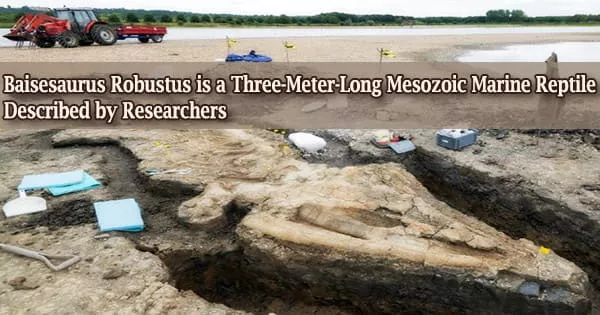According to a recent analysis of the vocalizations of New Zealand blue whales, the whales are year-round residents of the South Taranaki Bight and their behavior is influenced by the local environment.
The discoveries represent a substantial breakthrough in our knowledge of this group of blue whales, which was just recently recognized as genetically unique from other blue whale populations by researchers at Oregon State University.
“We went from not knowing 10 years ago whether this was a distinct population to now understanding these whales’ ecology and their response to changing environmental conditions,” said the study’s lead author, Dawn Barlow, a postdoctoral scholar in OSU’s Marine Mammal Institute. “These findings can inform conservation management of this blue whale population and their habitat.”
“The patterns and intensity of the whales’ calls and songs over two years showed strong seasonality in their foraging and breeding behavior, and the vocalizations changed based on environmental conditions such as a documented marine heatwave,” Barlow said.
“During the marine heatwave, feeding-related calls were reduced, reflecting poor foraging conditions during that period,” Barlow said. “But we also saw changes in vocalizations in the next breeding period, an indication that they put less effort into reproduction following a period of poor feeding conditions.”
The study was just published in the journal Ecology and Evolution. Barlow conducted the research as a doctoral student in the Geospatial Ecology of Marine Megafauna Laboratory at Hatfield Marine Science Center in Newport, led by associate professor Leigh Torres, a co-author of the new paper.
Blue whales are the largest of all whales and are found in all oceans except the Arctic. Due to commercial whaling’s depletion of their numbers in the early 1900s, they are now considered endangered species by the International Union for Conservation of Nature.
During the marine heatwave, feeding-related calls were reduced, reflecting poor foraging conditions during that period. But we also saw changes in vocalizations in the next breeding period, an indication that they put less effort into reproduction following a period of poor feeding conditions.
Dawn Barlow
A wide range of commercial activities, including as oil and gas exploration and extraction, vessel traffic, fisheries, the development of wind energy, and potential seabed mining, coexist with the habitat of New Zealand whales.
Torres first hypothesized in 2013 that the South Taranaki Bight, between New Zealand’s North and South Islands, was an undocumented blue whale feeding ground. The population in this area was genetically unique from other blue whale populations, as documented in 2018 by Torres, Barlow, and colleagues after extensive data gathering efforts and the use of numerous lines of evidence.
The majority of earlier study was based on observations collected by researchers during summertime trips to the area. Nonetheless, the scientists were interested in learning more about the whales’ yearly habit.
Between January 2016 and February 2018, they installed five hydrophones, a sort of underwater microphone that recorded continuously with only brief pauses to recover data every six months.
“Unlike many other baleen whales, this population stays in this region year-round,” Barlow said. “That means we can monitor what they are doing from one location. Listening is an effective way to do that.”
The hydrophone recordings revealed a substantial correlation between the whales’ “D” cries and the oceanographic conditions associated with upwelling in the spring and summer. Deeper, cooler water is forced toward the surface during an upwelling process, and the krill aggregations that the blue whales eat are supported by the nutrient-rich water. When there was a heavy upwelling, the whales’ D sounds were louder.
The recordings also revealed a very seasonal pattern in the whales’ song vocalizations, which are produced by males and connected to reproductive behavior. The song vocalizations peaked in the fall. That timing aligns with past whaling records’ estimates of conception, Barlow said.
“The hydrophone evidence of the breeding behavior and the whales’ presence in the region year-round can influence the animals’ national threat classification status, which impacts management practices,” the researchers said.
Blue whales in New Zealand had been classified as migrant, but as a result of the research by Torres, Barlow and colleagues, the classification of has changed from migrant to data deficient.
“If the whales are reclassified as a resident population, that could impact management practices, but evidence of breeding in New Zealand is needed for that change to occur,” the researchers said.
“Although no one has actually documented blue whales mating it is hard to observe that directly the increase in song during the expected time of mating is a strong indication of breeding in New Zealand waters,” Torres said. “Our study adds more evidence that these are resident New Zealand blue whales.”
The connection between the whales’ behavior and sounds allowed the researchers to examine the behavior and calls in relation to environmental trends. They focused on how the whales’ foraging and breeding habits altered before, during, and after a marine heatwave in 2016.
The researchers previously reported that there were less krill aggregations for the whales to feed on during the maritime heatwave. D calls were also less intense throughout that time period, and the breeding songs during the following breeding season were likewise less intense.
“The findings raise additional questions about how changing ocean conditions and human activity in the region are impacting the New Zealand blue whale population and reinforce the need for continued monitoring,” the researchers said.
“We have come so far in 10 years in our knowledge of these blue whales from not knowing this population existed to now understanding their year-round use of this region for feeding, mating and nursing,” Torres said. “New Zealanders should be excited and proud that their country is home to its own unique population of blue whales. We hope our work helps Kiwis manage and protect these whales.”
Additional coauthors are Holger Klinck, director of the Cornell University K. Lisa Yang Center for Conservation Bioacoustics, who also is affiliated with OSU’s Marine Mammal Institute; Dimitri Ponirakis of Cornell; and Trevor Branch of the University of Washington. The Marine Mammal Institute is part of Oregon State’s College of Agricultural Sciences.
















